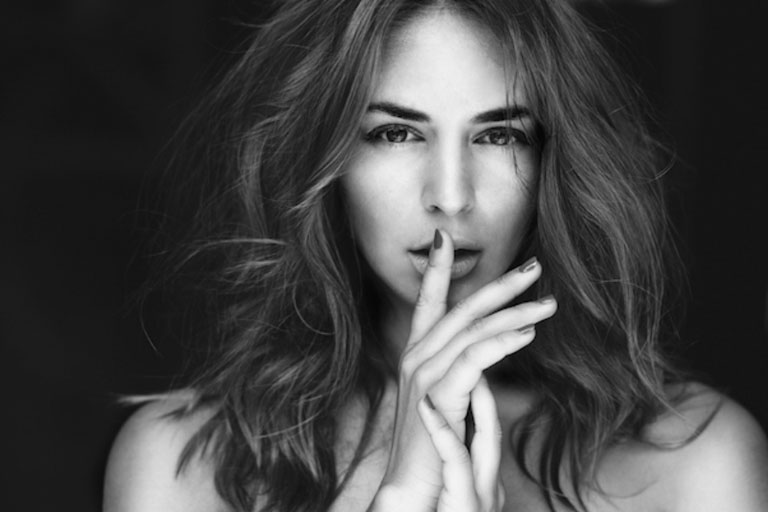

While colored photography is often what many of us think of when working with our cameras, black and white images are by no means obsolete. A black and white photo has a certain feel to it that can be the perfect choice in a shot to fit a particular mood or style. And just like with colored photographs, lighting is an essential key to making black and white photography reach its fullest potential.
The style you’re aiming for will impact the kind of lighting you need to start your planning, and the type of subject, be it portrait, landscape, or otherwise, will also play a role. And while your circumstances may change, having the techniques to work with black and white photography in your knowledge will go a long way to preparing you for whatever situation you may find yourself photographing.
Outdoor vs. Indoor Strategies
Just like with color photos, your environment will put an impact on the lighting you need. Often when it comes to outdoors, overcast lighting will produce nice contrasts between light and shadows that work much better in black and white than they may in color. Grayscales also add to the texture and depth of the image. You’ll have less luck with bright sunlight.
Indoors will necessitate balancing your main lights and fil lights to create the tonality you want. Even with your main lights, you don’t want to go too far with strong directional lighting, as it can introduce harsh shadows that don’t always look right in black and right. Strong backlight combined with soft foreground lights can give you the balance of contrasts and texture you need.
Working with Contrast
Color photography often discourages too much contrast, as it can create a jarring image. When working with black and white, you’ll need to reverse that line of thinking. Without color to bull attention, contrast is what drives distinction in black and white. Consider your shots regarding how you can display better contrast in your end image.
Setting your camera so that it previews images in black and white will help give you a good idea of how your pictures will come out. You’ll also want to focus on how shadows play, as they can give you some of the most distinct levels of contrast to pull in the viewer’s attention and emphasize different elements of your photos.
Start with One Light
Low-key lighting can help you better accomplish the look you want in your black and white photography, especially when working indoors. Too many lights can, just like the sun when you’re outdoors, erase the contrast and texture you need. As such, the best way to start setting up your lighting is to pick one.
When the light is closer to the subject, you can better introduce shadows for highlight and drama, as well as give you a dark background for further emphasis. Keep the light close to the subject and the subject away from the backdrop for a more pronounced effect. On the other hand, if you place the light farther from the focus, you’ll produce a flat-looking result. You can add extra lights for filling in different tones.
Consider Your Subject
As some subjects work far better in color than they ever could in black and white, you may want to steer away from those when picking out your focus. Instead, you should swap your concentration onto images that can be just as effective, if not more impactful, in black and white as they would be in color.
Black and white photography is closer to being an “older” medium, so it happens to lend itself well to older things. Older style buildings and equipment are just some items that fit the feel of black and white well, as do more aged individuals. And, naturally, focusing on subjects that have a heavy contrast that may not work the same in color is always a good choice.
Displaying Mood in the Image
The mood you want to convey in your photography is always essential, but it’s one of the substantial aspects of working in black and white. Since you don’t have color to impact the mood, you’ll need to pay attention to other elements. When working in portraits, the eyes are some of the most critical aspects of capturing and conveying emotion in black and white.
Setting up the final feel of an image can also come down to the lights. Hard lights in the background can establish more of a two-dimensional feeling, which is perfect for capturing silhouettes and flat images, especially when working indoors. Soft foreground lighting will pull out more texture, which will, in turn, impact the overall feel of the final shots.
Using Black to Make White Brighter
Sometimes, the balance of an image won’t have much to distinguish the elements from each other. However, our brains work in a way that interprets lights as brighter whenever the dark colors are more pronounced. And since you only have black and white along the dark to light spectrum, working with an image so that the shadowy aspects are very deep in color can help pull out the other elements of the photo.
This can include working with when you take a shot or in post-production. Some adjustment of the shadows in your photo can bring out the lighter parts. What’s interesting is that this technique can be much more impactful in black and white than in color, so you don’t want to waste it if you get the chance.
Enhancing Portrait Effects with Background and Clothing
When you’re working in black and white as a portrait photographer, you’ll be working to pull out different elements than in a landscape shot. Usually, a black and white portrait will focus on that contrast to full out elements. A dark background will capture in black (or close to it), which will pull forward attention onto your subject.
If you want to enhance the effects of minimal light further, you can have your subject wear dark clothing. This technique works to keep attention from wandering to clothes and brightly colored outfits. Instead, it helps to bring out the sections of bright illumination that usually fall on the face, keeping the perspective right on the subject. Using a drape can help reduce the impact of colorful clothing.
Thinking in Black and White
Since we see the world in color, we don’t always understand how something will look in black and white until the image is in front of us. However, that can make it difficult to achieve the shots that you want to pull off. As mentioned, you can use your camera’s settings to preview in black and white, which can go a long way in helping you reach the impact you want, but it’s possible to focus on key elements:
- Lines
- Shapes
- Shadows
- Contrasts
When you start to focus on these elements, it makes it easier for your brain to think of how a black and white image will work—and since its different than color, you’ll likely find yourself focusing on aspects you wouldn’t have otherwise. Just like any camera technique, this state of mind takes practice, but you’ll get more used to it with time.
Shaping Light Outside of Contrast
While contrast is a cornerstone of black and white photography, it’s not the only approach that you can take. Instead, pulling away from sharp distinctions allows you to integrate more grayscale into your images. And with grayscale, you start to draw in texture, which can give your photos a new sort of life.
As for what you need to do for lighting, you can start to work in a combination of hard backlight and soft foregrounds to set up the right balance you need. However, if you involve too much light, you run the risk of having an image fall completely flat. Leave that strategy for when you’re working in color and introduce shadows that are a little bit deeper than you might have otherwise.
Include a Clean Black and a Clean White
This rule is one that you can bend a little bit as you get used to it, but having a clean black and a pure white is something that can help your photos start to pop. Just like how deepening the dark shades can help your whites stand out, having the two elements gives the image the polar ends that make it easier to appreciate the grays in between.
Otherwise, you have a photo that consists of only grays, which can make it seem muddy and take away the texture. Not only should you work to think about this when you’re taking photos, but it can help you in post-production as well. Even if you need to add in a clean black and white after the fact, it may be the key to maintaining an image pull together.
As you work in black and white photography, you can get closer to developing your style and techniques. Still, keeping these strategies in mind can give you a starting point to build on as you continue to take photos.














